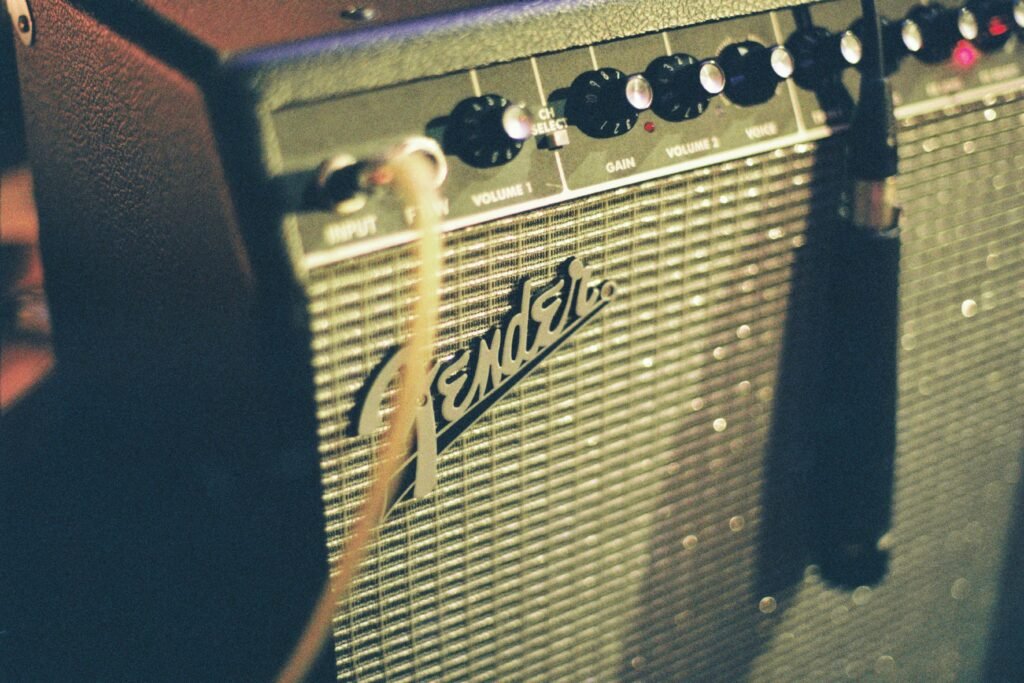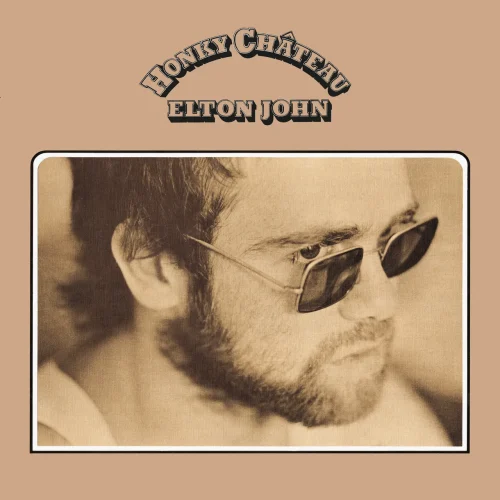In the pantheon of Elton John’s illustrious career, Honky Château stands as a pivotal moment, marking a transitional phase that would cement his legacy in rock history. Released in May 1972, this fifth studio album diverged from the more orchestral and folk-influenced sounds of his earlier works like Tumbleweed Connection and Madman Across the Water. Instead, Honky Château delved into a more eclectic blend of rock and roll, honky-tonk, and pop, showcasing John’s versatility and ambition.
Set against the backdrop of a rapidly evolving music scene, Honky Château emerged during a time when rock music was becoming more experimental and genre-blending. The early 70s saw artists like David Bowie, Pink Floyd, and Led Zeppelin pushing the boundaries of what rock could be, and Elton John was no exception. Recorded at the Château d’Hérouville, a residential recording studio in France that had become a haven for creative exploration, the album captures a raw, yet polished sound that mirrors the spontaneous energy of its setting.
Artistic Intentions
Elton John’s artistic intentions for Honky Château were multifaceted. In interviews, he expressed a desire to create music that was both accessible and artistically challenging. This ambition is reflected in the album’s diverse tracklist, which ranges from the infectious piano-driven rock of “Rocket Man” to the soulful introspection of “Mona Lisas and Mad Hatters.” By embracing a more band-oriented approach, with a core group of musicians who would become his longtime collaborators, John aimed to foster a sense of cohesion and spontaneity that had been less pronounced in his earlier, more orchestrated efforts.
Moreover, Honky Château marked a significant moment in John’s lyrical partnership with Bernie Taupin. The album’s themes of stardom, introspection, and Americana were woven with a newfound maturity and depth, resonating with the introspective zeitgeist of the early 70s. Together, John and Taupin crafted a collection of songs that were not only musically adventurous but also lyrically profound, capturing the complexities of fame and identity.
Sonic Exploration

Production Quality
The production of Honky Château is a masterclass in balancing clarity with raw energy. Engineered by Ken Scott, known for his work with The Beatles and David Bowie, the album benefits from a crisp, clean sound that still retains an organic, almost live quality. This approach serves the album’s themes of spontaneity and introspection well, capturing the essence of the intimate recording sessions at the Château d’Hérouville. The acoustics of the château’s rooms add a subtle reverb, lending a warm, natural ambiance to the tracks, which enhances the album’s earthy, grounded feel.
Musical Arrangements
One of the standout features of Honky Château is its innovative musical arrangements. Elton John’s piano playing is front and center, driving the melodies with a blend of rock and honky-tonk influences. The album opens with “Honky Cat,” featuring a lively New Orleans-inspired piano riff, complemented by a brass section that injects a joyful exuberance. This sets the tone for the album’s diverse sonic palette.
Guitarist Davey Johnstone, making his first appearance with John’s band, adds a new dimension with his versatile playing. From the intricate acoustic guitar work on “Mona Lisas and Mad Hatters” to the electric riffs on “Hercules,” Johnstone’s contributions are both innovative and memorable. The rhythm section, comprised of Nigel Olsson on drums and Dee Murray on bass, provides a solid yet dynamic foundation, particularly on tracks like “Rocket Man” and “Susie (Dramas).”
Vocally, Elton John delivers one of his most compelling performances to date. His voice, rich and emotive, navigates the album’s varied moods with ease. The layered harmonies, often featuring backing vocals from the band, create a lush, full sound that enhances the emotional impact of the lyrics.
Genre Elements
Honky Château is a melting pot of musical genres, showcasing Elton John’s ability to blend styles seamlessly. The album’s primary genre is rock, but it incorporates elements of honky-tonk, folk, pop, and even touches of gospel and country. This eclectic mix is most evident in songs like “Rocket Man,” which combines space-themed lyrics with a folk rock sensibility, and “Honky Cat,” which merges rock with New Orleans jazz.
The genre-blending is done in a way that feels fresh and innovative, rather than forced. For instance, “Salvation” has a gospel-infused chorus that elevates its rock foundation, while “Amy” infuses rock with a country twang, creating a unique sonic hybrid. This willingness to experiment with different genres and sounds is a testament to John’s and Taupin’s creative ambitions, pushing the boundaries of what pop and rock music could be at the time.
Lyrical Analysis

Themes and Messages
Honky Château explores a variety of themes, many of which reflect the personal and professional experiences of Elton John and his lyricist Bernie Taupin. Central to the album is the theme of self-reflection and the search for identity, evident in songs like “Rocket Man” and “Mona Lisas and Mad Hatters.” “Rocket Man,” one of the album’s standout tracks, uses space travel as a metaphor for isolation and the pressures of fame, resonating deeply with John’s burgeoning stardom. Similarly, “Mona Lisas and Mad Hatters” reflects on the contrast between the superficial allure of New York City and its harsher realities, encapsulating a sense of disillusionment and introspection.
Another recurring theme is that of Americana and nostalgia, which is prominently featured in tracks like “Honky Cat” and “Amy.” “Honky Cat” nostalgically reminisces about rural life while critiquing the fast-paced urban existence, capturing the tension between simplicity and complexity in modern life. “Amy,” with its country-inflected sound, tells a story of unrequited love and yearning, adding a personal touch to the album’s broader thematic landscape.
Lyrical Depth
Taupin’s lyrics on Honky Château exhibit a blend of straightforward narrative and poetic abstraction, allowing for multiple layers of interpretation. For instance, “Rocket Man” is both a literal tale of an astronaut’s journey and a poignant metaphor for the alienation felt by those thrust into the limelight. The lyrics are rich in imagery and emotion, drawing listeners into the internal struggles and aspirations of the characters.
“Mona Lisas and Mad Hatters” is another example of Taupin’s lyrical prowess. The song juxtaposes iconic imagery of New York City with personal reflections, creating a tapestry of visual and emotional contrasts. Lines like “And I thank the Lord there’s people out there like you” add a touch of gratitude amidst the song’s melancholic tone, showcasing Taupin’s ability to weave complex emotions into his lyrics.
The lyrics of “I Think I’m Going to Kill Myself” tackle dark themes with a provocative edge, reflecting the era’s willingness to confront taboo subjects head-on. Despite its controversial subject matter, the song’s playful musical arrangement contrasts with its somber lyrics, highlighting the album’s ability to balance darkness with levity.
Emotional Impact
The lyrics of Honky Château contribute significantly to the album’s emotional resonance. The introspective and often melancholic themes evoke a sense of empathy and contemplation, inviting listeners to reflect on their own experiences of isolation, longing, and self-discovery. “Rocket Man,” with its haunting refrain and poignant lyrics, elicits a profound sense of loneliness and existential dread, making it one of Elton John’s most emotionally powerful songs.
Conversely, tracks like “Honky Cat” and “Hercules” infuse the album with a sense of joy and playfulness. The upbeat lyrics and lively arrangements create a contrast to the more reflective songs, ensuring the album maintains a dynamic emotional range.
“Mona Lisas and Mad Hatters” stands out for its ability to evoke both sadness and hope. The song’s reflective lyrics and somber tone are underscored by moments of lyrical optimism, creating a complex emotional landscape that resonates deeply with listeners.
Cohesion and Flow

Track Progression
Honky Château excels in its seamless track progression, creating a listening experience that feels both intentional and organic. The album opens energetically with “Honky Cat,” an upbeat track that sets a lively tone with its vibrant piano riffs and brass flourishes. This exuberance is immediately contrasted by the introspective and somber “Mellow,” illustrating Elton John’s ability to navigate different emotional terrains without disrupting the album’s overall flow.
The journey continues with “I Think I’m Going to Kill Myself,” which, despite its dark lyrical content, maintains a jaunty musical arrangement that keeps the momentum going. This contrast between lyrical themes and musical style is a recurring motif throughout the album, contributing to its dynamic feel.
“Rocket Man,” positioned in the middle of the album, serves as a thematic and emotional centerpiece. Its haunting melody and reflective lyrics create a moment of introspection that anchors the album’s narrative. Following “Rocket Man,” the transition to “Salvation” is smooth, as both songs share a contemplative tone, though “Salvation” shifts towards a more hopeful and gospel-infused sound.
The latter part of the album continues this pattern of balancing introspection with more upbeat tracks. “Amy” brings a touch of country charm, while “Hercules” ends the album on a playful, high-energy note. This careful alternation between different moods and styles ensures that each track flows naturally into the next, maintaining the listener’s engagement from start to finish.
Thematic Consistency
The thematic consistency of Honky Château is one of its greatest strengths. The album’s exploration of self-reflection, fame, and Americana weaves a cohesive thread through its diverse musical styles. Elton John and Bernie Taupin effectively blend rock, pop, honky-tonk, and country elements, creating a unified sound that reflects the album’s eclectic influences.
While each song stands on its own, there are recurring motifs that tie the album together. The tension between rural and urban life, for instance, is a theme that runs from the nostalgic “Honky Cat” to the reflective “Mona Lisas and Mad Hatters.” Similarly, the themes of isolation and the quest for identity, prominently featured in “Rocket Man” and “Hercules,” provide a narrative continuity that enhances the album’s coherence.
Even the shifts in musical style—such as the transition from the gospel-influenced “Salvation” to the country-tinged “Amy”—are handled with a deft touch, ensuring that these changes feel natural rather than jarring. The album’s production, with its consistent use of acoustic instrumentation and warm, live-sounding recording techniques, further contributes to its cohesive feel.
Standout Tracks and Moments
Highlight Key Tracks
Honky Château is an album brimming with standout tracks, each showcasing different facets of Elton John’s artistic prowess and Bernie Taupin’s lyrical genius. Here are a few key tracks that particularly shine:
- “Rocket Man”: Arguably the album’s most iconic song, “Rocket Man” stands out for its emotional depth and innovative use of metaphor. The story of an astronaut’s isolation mirrors John’s own feelings of loneliness amidst fame. The haunting melody, coupled with Taupin’s poignant lyrics—“And all this science, I don’t understand / It’s just my job five days a week”—captures a sense of existential longing that resonates deeply.
- “Honky Cat”: This opening track is a vibrant blend of rock and New Orleans jazz, distinguished by its infectious piano riff and energetic brass section. The playful lyrics and upbeat tempo immediately grab the listener’s attention, setting a lively tone for the album. The song’s narrative about the lure of city life versus the simplicity of the countryside is both relatable and timeless.
- “Mona Lisas and Mad Hatters”: A beautiful ballad that showcases John’s ability to convey deep emotion through music. The song’s lyrics reflect on the dualities of life in New York City, capturing both its beauty and harshness. The subtle acoustic guitar and heartfelt vocal delivery create an intimate atmosphere that makes the listener feel every word.
- “Hercules”: Closing the album on a high note, “Hercules” is a playful and energetic track that highlights John’s skill at blending humor with rock sensibilities. The song’s catchy melody and lively piano underscore its whimsical lyrics, making it a memorable end to the album.
Memorable Moments
Honky Château is full of memorable moments that capture its essence and showcase Elton John’s talent:
- The Opening Piano Riff of “Honky Cat”: The very first notes of the album set an upbeat and engaging tone. The lively honky-tonk piano riff, accompanied by a jubilant brass section, immediately pulls the listener in and exemplifies John’s knack for creating infectious melodies.
- The Chorus of “Rocket Man”: The chorus—“And I think it’s gonna be a long, long time”—is not only musically powerful but also emotionally resonant. The soaring melody and reflective lyrics create a moment of introspective beauty that has become one of John’s signature pieces.
- The Bridge of “Mona Lisas and Mad Hatters”: The lyrical introspection—“While Mona Lisas and Mad Hatters / Sons of bankers, sons of lawyers”—paired with a gentle acoustic guitar, offers a poignant commentary on social contrasts, enhanced by John’s emotive vocal delivery.
- The Gospel Chorus in “Salvation”: This track features a powerful gospel-influenced chorus that adds a layer of spiritual depth to the album. The rich harmonies and uplifting lyrics provide a hopeful contrast to the album’s more introspective moments.
- The Playful Ending of “Hercules”: The closing moments of the album feature a spirited piano riff and playful lyrics, leaving listeners with a sense of joy and energy. It’s a perfect conclusion that encapsulates the album’s blend of seriousness and lightheartedness.
Artistic Contribution and Innovation

Place in Genre/Industry
Honky Château holds a significant place within the rock and pop genres of the early 1970s, representing a period of artistic evolution for Elton John and a broader shift in the music industry. At a time when rock music was increasingly embracing complexity and experimentation, John’s album bridged the gap between mainstream appeal and artistic depth. It neither wholly adhered to established norms nor radically departed from them; instead, it blended familiarity with innovation, making it accessible yet distinctive.
Within the music industry, Honky Château marked a crucial point in John’s career, transitioning him from a rising star to a global icon. The album’s commercial success, driven by hit singles like “Rocket Man,” helped solidify his reputation as a versatile and prolific artist. It also exemplified the increasing importance of the album format in popular music, demonstrating that commercial viability and artistic ambition could coexist.
Innovation
Several aspects of Honky Château stand out as particularly innovative and fresh, contributing to its enduring influence:
Genre Blending
One of the album’s most notable innovations is its seamless blending of genres. By incorporating elements of rock, pop, honky-tonk, country, and even gospel, John created a sound that was eclectic yet cohesive. This genre-crossing approach was ahead of its time, prefiguring the more fluid musical boundaries that would become common in later decades. Tracks like “Honky Cat” and “Rocket Man” exemplify this synthesis, combining diverse influences into a unified and distinctive sound.
Production Techniques
Recorded at the Château d’Hérouville, the album benefits from a unique production environment that influenced its sound. The chateau’s acoustics and the relaxed, creative atmosphere fostered spontaneous and organic performances. Ken Scott’s engineering ensured that this spontaneity was captured with clarity and warmth, blending the immediacy of live recording with the polish of studio production. This approach provided a raw yet refined quality that was innovative for its time.
Lyrical Depth and Themes
Bernie Taupin’s lyrics on Honky Château pushed thematic boundaries, addressing complex emotions and social commentary with poetic finesse. Songs like “Rocket Man” and “Mona Lisas and Mad Hatters” offered profound insights into fame, isolation, and societal contrasts. The depth and maturity of these themes set the album apart from many contemporary records, which often focused more on straightforward narratives or romantic themes.
Instrumental Arrangements
The album’s instrumental arrangements are another area of innovation. Elton John’s piano work is more prominent and diverse, ranging from the rollicking riffs of “Honky Cat” to the delicate, introspective playing on “Mona Lisas and Mad Hatters.” The inclusion of Davey Johnstone’s versatile guitar work added new textures and layers, while the rhythm section’s dynamic interplay provided a solid yet flexible foundation. The use of brass and gospel choirs further expanded the sonic palette, making each track distinct and memorable.
Cohesive Artistic Vision
Perhaps most innovative is the album’s ability to maintain a cohesive artistic vision while exploring a wide range of styles and themes. This balance of variety and unity was a hallmark of John’s work during this period, setting a standard for future albums that sought to combine commercial success with artistic integrity.
Closing Thoughts

Honky Château is a landmark album in Elton John’s discography and a significant contribution to the rock and pop genres of the early 1970s. The album’s strengths lie in its eclectic blend of musical styles, innovative production, and lyrical depth. Elton John and Bernie Taupin crafted a collection of songs that are both musically adventurous and emotionally resonant, showcasing their ability to create compelling and timeless music.
Strengths & Weaknesses
One of the album’s key strengths is its genre-blending approach. By seamlessly integrating rock, pop, honky-tonk, country, and gospel elements, Honky Château presents a diverse yet cohesive sound that was ahead of its time. The production quality, achieved through the unique recording environment of the Château d’Hérouville and the expertise of engineer Ken Scott, captures a raw yet polished sound that enhances the album’s spontaneous and organic feel.
Lyrically, the album excels with its thoughtful exploration of themes such as fame, isolation, and the contrast between rural and urban life. Taupin’s poetic and introspective lyrics are complemented by John’s emotive vocal delivery, creating songs that resonate on a deep emotional level. Tracks like “Rocket Man” and “Mona Lisas and Mad Hatters” stand out for their profound and reflective nature, making them timeless classics.
However, Honky Château is not without its minor weaknesses. While the album’s diversity is a strength, some listeners might find the shifts in musical style to be somewhat jarring. Additionally, not every track reaches the same level of brilliance as the standouts, which can create a slightly uneven listening experience. Despite these minor flaws, the album’s overall impact and artistic merit far outweigh its shortcomings.
Place In Career
In the broader context of Elton John’s career, Honky Château represents a pivotal moment of artistic growth and commercial success. It marked his transition from a rising star to a global icon, laying the groundwork for the prolific output and massive popularity that would follow. The album’s innovative approach to genre and production has influenced countless artists and continues to be celebrated for its originality and emotional depth.
Official Rating
We award the album an 9/10, this rating reflects Honky Château‘s significant contributions to music and its enduring appeal. The album’s innovative blending of genres, high production quality, and emotionally resonant lyrics make it a standout work in Elton John’s discography. While there are minor inconsistencies, the strengths of Honky Château firmly establish it as a classic album that has had a lasting impact on listeners and the music industry alike.
